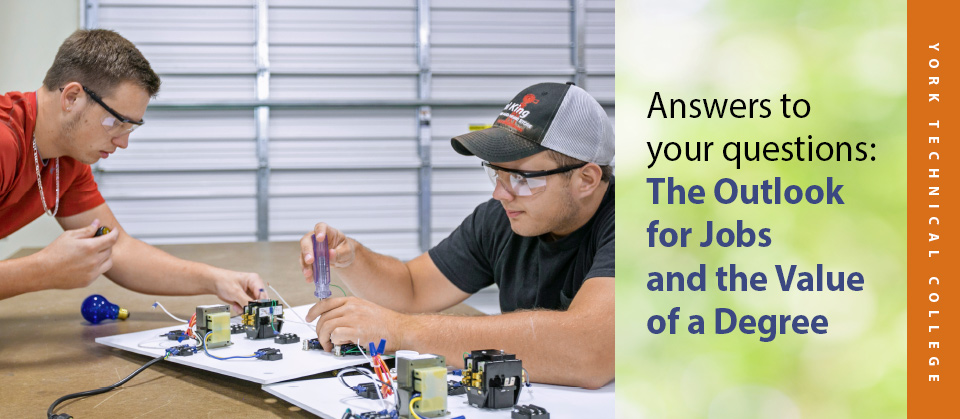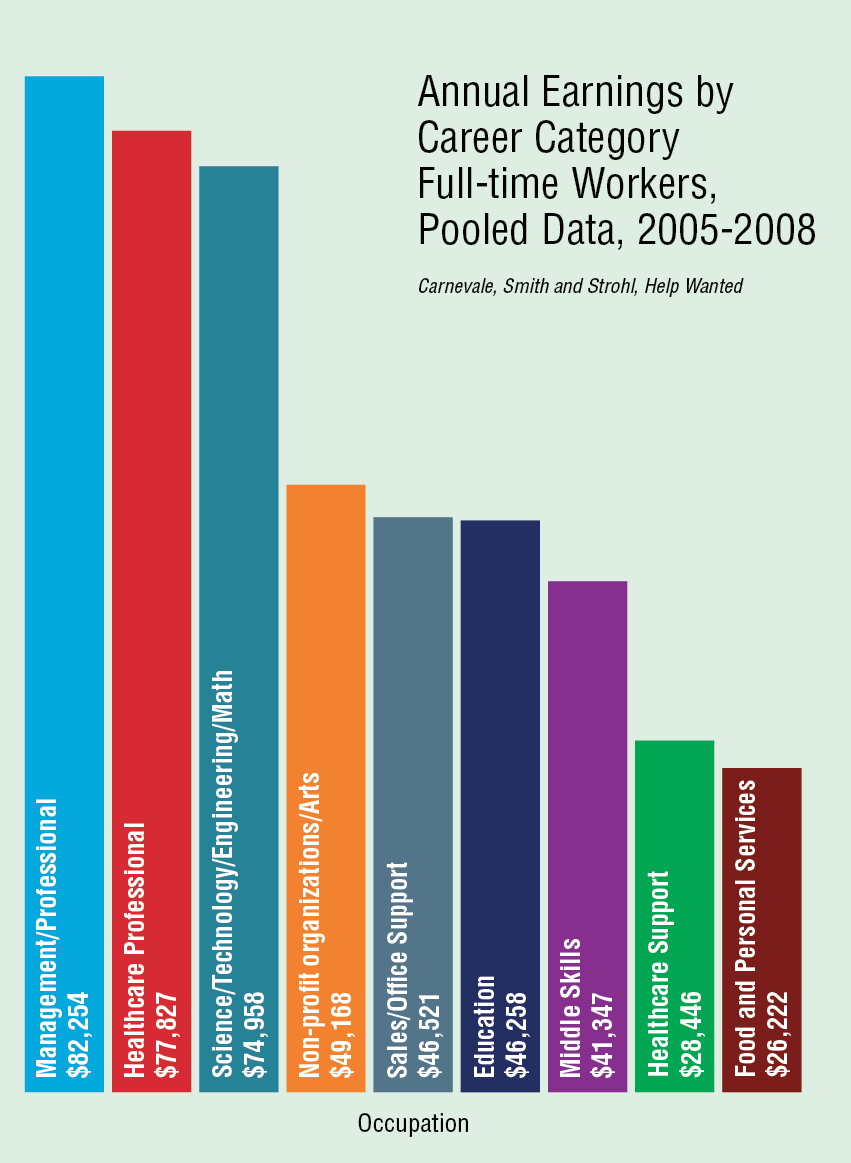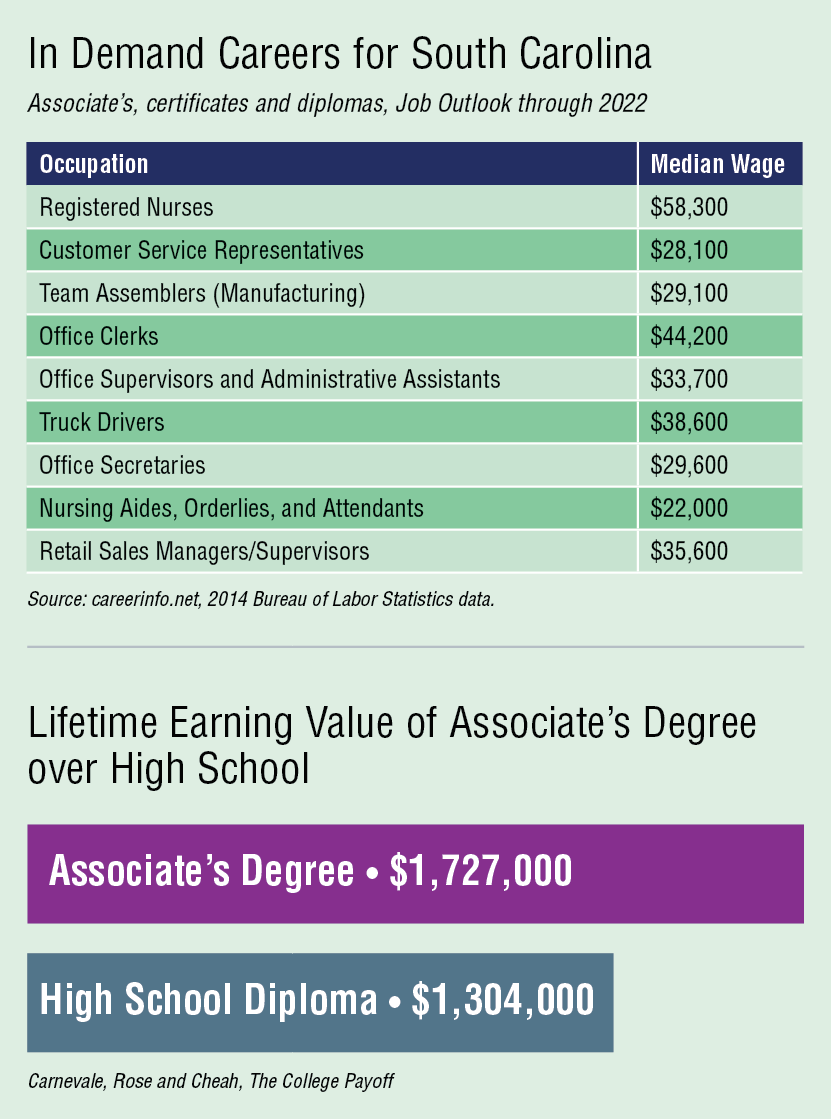
 When choosing a career, it’s important to know your personal interests and talents, as well as the job outlook for professions matching these abilities, the education required, and the earnings you can expect—annually and over a lifetime. Our career -finder, Find Your Match, uses short questions to get a sense of your personality, interests and values, then matches them to career opportunities and York Tech programs related to your career options. In just five minutes, match.yorktech.edu, you can identify the careers that are best suited to your personality and aptitudes.
When choosing a career, it’s important to know your personal interests and talents, as well as the job outlook for professions matching these abilities, the education required, and the earnings you can expect—annually and over a lifetime. Our career -finder, Find Your Match, uses short questions to get a sense of your personality, interests and values, then matches them to career opportunities and York Tech programs related to your career options. In just five minutes, match.yorktech.edu, you can identify the careers that are best suited to your personality and aptitudes.
Several recent economic studies shed light on the outlook for national and local jobs and help answer the question: Is higher education worth it?
Occupational Demand, Educational Attainment, and Earnings
Labor market economists Anthony P. Carnevale, Nicole Smith, and Jeff Strohl of the Georgetown University’s Center on Education and the Workforce have produced a comprehensive and detailed look at the future national job market and the relationship of employment demand to educational attainment. Their June 2010 study, “Help Wanted: Projections of Jobs and Education Requirements through 2018”, included these two conclusions:
- By 2018, the U.S. economy will create 46.8 million openings—13.8 million brand-new jobs and 33 million “replacement jobs” (positions vacated by workers who have retired or permanently left their professions). Almost two-thirds of these 46.8 million jobs, nearly 63 percent, will require workers with at least some college education.
- By 2018, the postsecondary system will have produced 3 million fewer college graduates than demanded by the labor market.
 This second point is very important. In evaluating the outlook for an occupation, the potential supply of workers is as imperative as the projected number of openings. Brian Points, in association with Economic Modeling Specialists, Inc., takes this approach in an October 2011 analysis “Dealing with Skills Shortages in a Complex Economy.” Compiling data on new graduates, unemployed workers, and “compatible workers” or those with the requisite skills to switch careers given a wage incentive to do so, he determines the potential supply of workers available for each position. Points compares this to forecasted job openings to identify those careers with a relative shortage of skilled workers. His analysis identifies the following careers as having a favorable national job outlook given the expected supply of prepared applicants:
This second point is very important. In evaluating the outlook for an occupation, the potential supply of workers is as imperative as the projected number of openings. Brian Points, in association with Economic Modeling Specialists, Inc., takes this approach in an October 2011 analysis “Dealing with Skills Shortages in a Complex Economy.” Compiling data on new graduates, unemployed workers, and “compatible workers” or those with the requisite skills to switch careers given a wage incentive to do so, he determines the potential supply of workers available for each position. Points compares this to forecasted job openings to identify those careers with a relative shortage of skilled workers. His analysis identifies the following careers as having a favorable national job outlook given the expected supply of prepared applicants:
- veterinarians
- occupational therapists
- accountants and auditors
- pharmacists
- physician assistants
- environmental scientists
- registered nurses
- speech pathologists
- clergy
- respiratory therapists
- operations research analysts
- civil engineers
- financial analysts
- health services managers
- medical scientists
It is well established that postsecondary education is associated with increased earnings and upward mobility. While 65 percent of workers with a high school diploma and no college experience have household incomes placing them in the middle class or above, completion of an associate’s degree raises this proportion to 80 percent. Earning a bachelor’s degree pushes the proportion in the middle class or above to 86 percent.
This analysis by Carnevale, Smith, and Strohl documents the considerable differences in annual earnings depending on the type of job one holds. Professionals such as doctors and lawyers, corporate managers, healthcare professionals such as nurses and therapists, and workers with skills and education in science, technology, engineering, and mathematics (STEM) occupations earn notably higher incomes than workers with less education. Within healthcare, contrast the $77,827 average earnings of those with professional training with an associate’s degree and above with the $28,446 earned by healthcare support workers without postsecondary education. Carnevale, Smith, and Strohl note that the health care industry has increased employment by almost 650,000 jobs since the current recession began.
 What’s an Associate’s Degree Worth?
What’s an Associate’s Degree Worth?
These same economists have calculated the median lifetime earnings of workers at each level of educational attainment. This allows us to put a dollar amount on the value of education at each level. The economic benefit of additional education and training over a lifetime can be substantial.
On average, people with a high school diploma will earn almost $9,000 per year more than those who have not completed high school. Over a lifetime, this translates to over $330,000 in additional earnings.
Having some college education, even without earning a degree, adds nearly $250,000 to lifetime earnings.
Getting an associate’s degree bumps this up another $180,000, making an associate’s degree worth over $420,000 in lifetime earnings above what you can expect to earn as only a high school graduate.
Consider further investment in yourself. Avail yourself of the resources at York Technical College. Visit Career Services and the Student Success Center to explore occupations. Invest in your education, advance your career, and enrich your life. You’re worth it!

